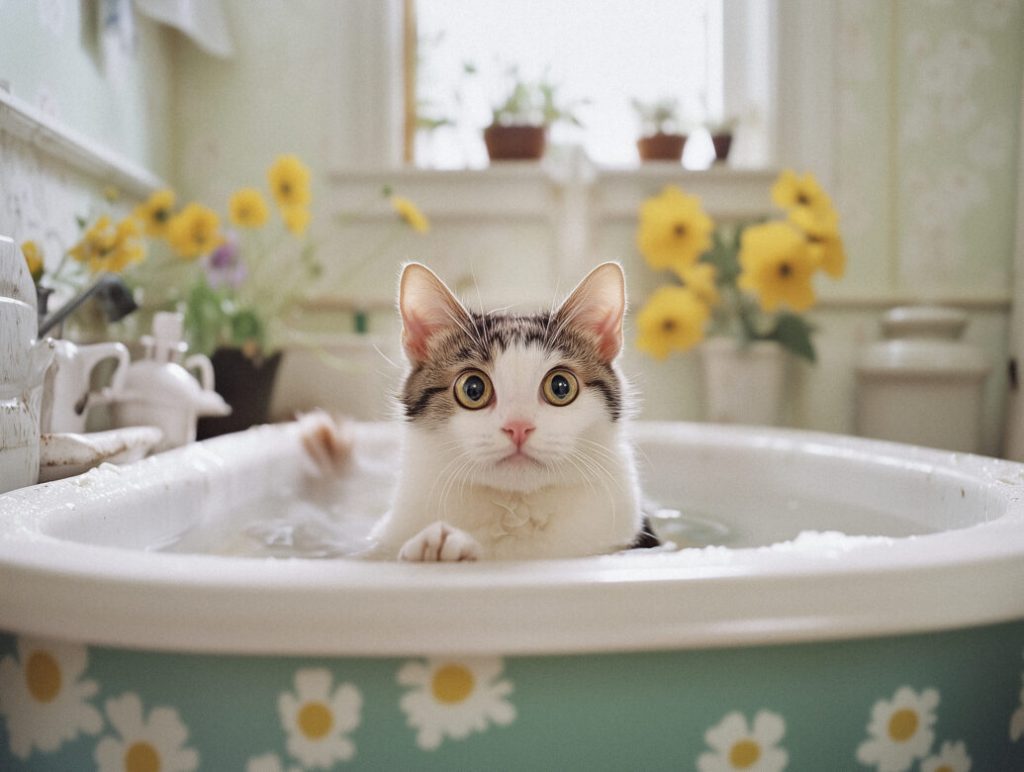In the blazing summer heat, even just stepping outside to grab a package can leave you drenched in sweat and smelling unpleasant. Moments like these only add to the reasons to envy cats: why don’t they sweat? I’ve always thought that a key reason cats and dogs make such great human companions is because they don’t sweat. Imagine on a scorching day, if a cat were soaking wet and smelling bad—would you still want to pet it?
• Do Cats Really Not Sweat?
Actually, cats do sweat, but only in very small, specific areas of their bodies. Their sweat glands are mainly located in certain hairless spots, such as their paw pads, around the mouth, under the chin, and near the anus. These areas may sweat under particular conditions, but it’s usually so minimal that we hardly notice. Moreover, cats don’t only sweat in hot weather—they also sweat when they’re nervous or scared, similar to humans breaking out in a “cold sweat.” A common example is when a cat is anxious at the vet and leaves damp paw prints on the examination table.
• Cats’ Secret Cooling Methods
Cats have very few sweat glands, so sweating alone isn’t enough to cool them down. Compared to humans, cats have more “three-dimensional” ways to regulate their body temperature:
①Licking Their Fur: Grooming isn’t just about cleanliness. When cats lick their fur, the saliva evaporates and helps carry heat away from their bodies, providing a natural cooling effect. That’s why you’ll notice cats grooming more often during the summer.
②Sleeping: Another secret is sleep. Much like their desert ancestors, cats tend to avoid the heat by sleeping in shady, cool spots throughout the day, only becoming active again when the evening cools down.

• Do Cats Pant Like Dogs?
Dogs pant heavily, breathing with their mouths wide open, tongues hanging out, looking like they’re about to overheat. While cats can also breathe heavily to cool down, they usually don’t pant like dogs. If you do see a cat with an open mouth panting, it’s a sign that the cat is extremely hot, stressed, or possibly ill. Common causes include fever, heatstroke, heart disease, or respiratory issues. In such cases, immediately move the cat to a cool, quiet place, provide fresh water, and help it calm down. If panting continues or other symptoms appear, seek veterinary care right away.
• Is Excessive Sweating a Sign of Illness in Cats?
Cats rarely sweat excessively. If you find a cat leaving damp paw prints while walking in a cool environment, it likely means the cat is anxious or scared and not feeling relaxed. It’s important to identify the cause and help restore the cat’s sense of security. Also, if you notice a cat’s mouth often wet, it’s usually not sweat but drool. Cats may drool for various reasons, including dental problems, stomach discomfort, or excitement. Sometimes they salivate when eating something particularly tasty. However, if the drooling is frequent without clear excitement or eating, it’s best to have the cat checked by a vet as soon as possible.
Cats don’t sweat all over like humans do; instead, their sweating is limited to very specific spots. However, they have their own set of “cooling secrets”: licking their fur, seeking out shady spots, and taking plenty of naps — all carefully tuned to keep them comfortable. As a pet owner, it’s important to create a cool and cozy environment for your cat during the summer. This includes running the air conditioner, providing fresh water, and ensuring well-ventilated resting areas. Never underestimate a cat’s sensitivity to heat. After all, such elegant creatures would never allow themselves to be drenched in sweat or smell unpleasant.

